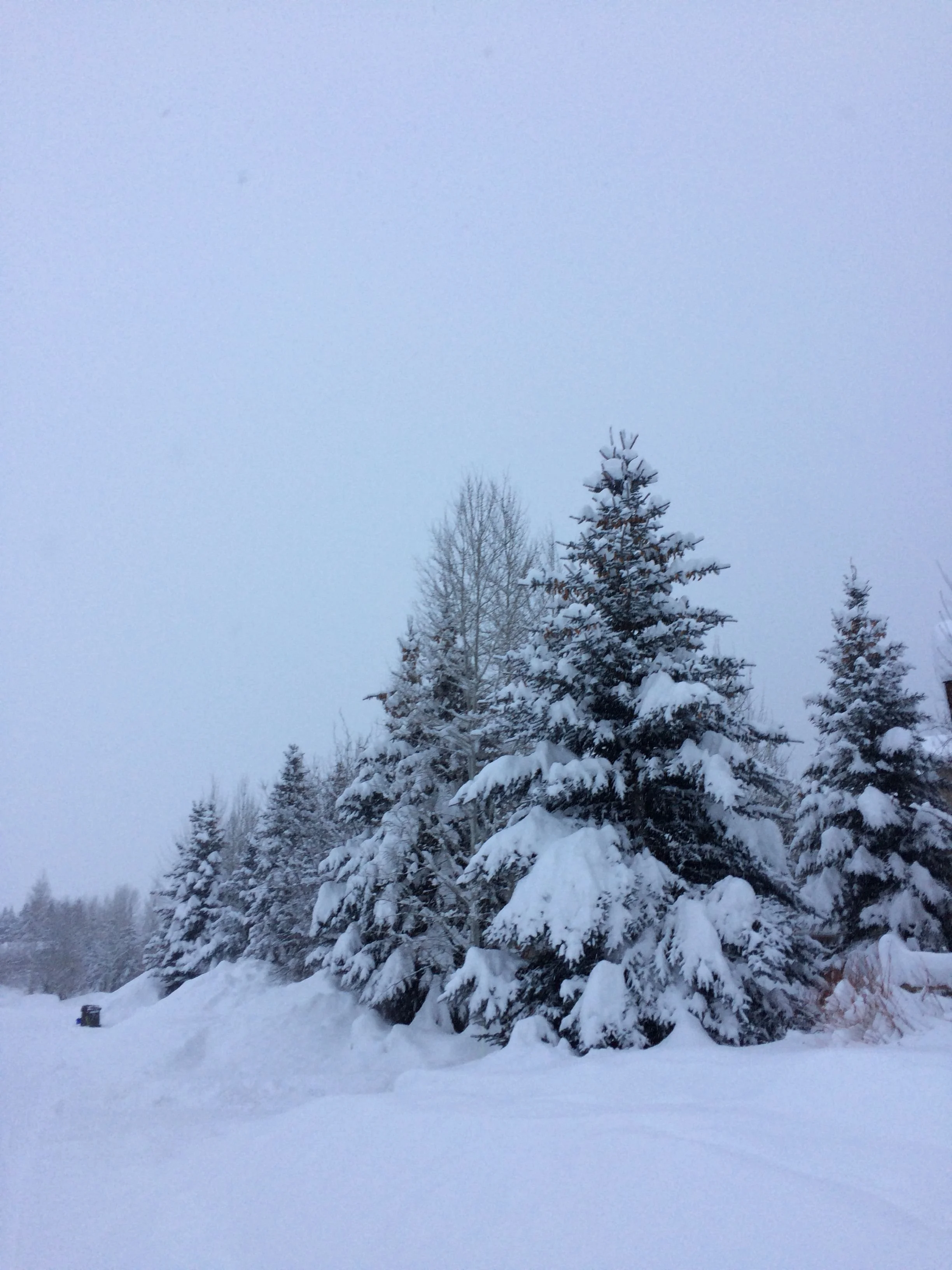Evergreen plants can be harmed by the snow and ice of winter.
Inspect your plants for winter damage. Snow can cause
excessive bending down of evergreen branches to the point of breaking. These broken branches will always be weak if you try to bend them back up or tie them back up.
Consider cutting them off and, if possible, train neighboring branches to grow and fill in the gaps.
To avoid breakage or other injury, brush the heavy, wet snow off of the plants as soon as it stops snowing or even while it is snowing. Do not beat on the branches to remove the snow. Use a broom to lightly push or brush the snow off the branches.
Sometimes the snow bends the leader of the evergreen over. If the leader remains bent for a long time, it may not return to its normal position after the snow melts.
Carefully brush the snow off the plant. If after removing the snow, the plant stays bent, it may need some extra support. To correct this problem, the leader has to be straightened and then tied or anchored in place.
If the tree is not too big, a stake can be tied to the trunk below the bent tip. Then the bent leader can be tied upright to the stake. The stake needs to remain in place for several growing seasons until enough new internal wood is made to support the damaged wood in the upright position.
However, if the tree is very large, guide wires anchored to the ground may have to be used for several years. If the tree has multiple leaders like many arborvitae and junipers have, the leaders may spread outward like the spokes in a wagon wheel.
You may not need to stake or guide wire the multiple leader plants. Instead, pull the stems back upright and tie them in one big circle rather than tying individual leaders.
At least once a year the tied areas need to be untied and retied at slightly different heights. If the ropes are never adjusted, the ropes can strangle and kill the leader.
Even though it may sound and look odd, panty hose makes a better material for tying your tree to a stake. Panty hose do not cut into the plant tissues like rope or wire. Nylon also takes longer to fall apart so it can be used longer. To help the nylon blend in better, use brown or green panty hose. In addition, cut the pants portion out and use just the leg portion for tying.
Ice can be more difficult to remove. Trying to remove ice from bent-over plants often results in greater damage. Instead, wait for the ice to melt and then straighten and tie the branch upright if necessary.



